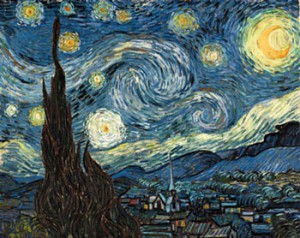Elements of design:
- Point
- Line
- Shape
- Volume
- Direction
- Size
- Texture
- Colour
Principles of design:
- Unity
The relationship among the elements of a visual that helps all the elements function together. It gives a sense of oneness to a visual image. The words and the images work together to create meaning.
- Harmony
All parts of the visual image relate to and complement each other. Can be achieved through repetition and rhythm.
- Contrast
Arrangement of opposite elements in a piece so as to create visual interest, excitement and drama.
- Repetition
Combination of elements or shapes repeated in a recurring and regular arrangement.
Rhythm is a combination of elements repeated, but with variations.
- Movement
The path the viewer’s eye takes through the artwork, often to a focal area. It can be directed along lines, edges, shapes and colour. Objects seem to be moving in a visual image.
- Balance
The distribution of the visual weight of objects, colours, texture, and space. If the design was a scale, these elements should be balanced to make a design feel stable.
- Emphasis
An area or object within the artwork that draws attention and becomes a focal point. Minimizing or toning down other composition elements in order to bring attention to the focal point.







